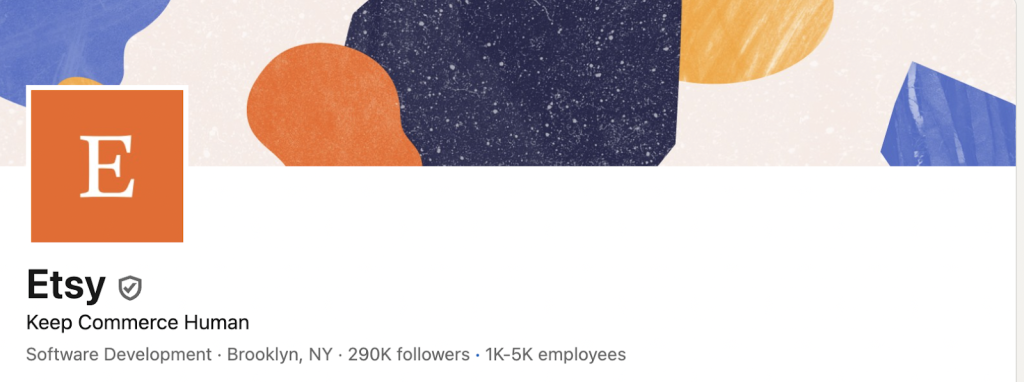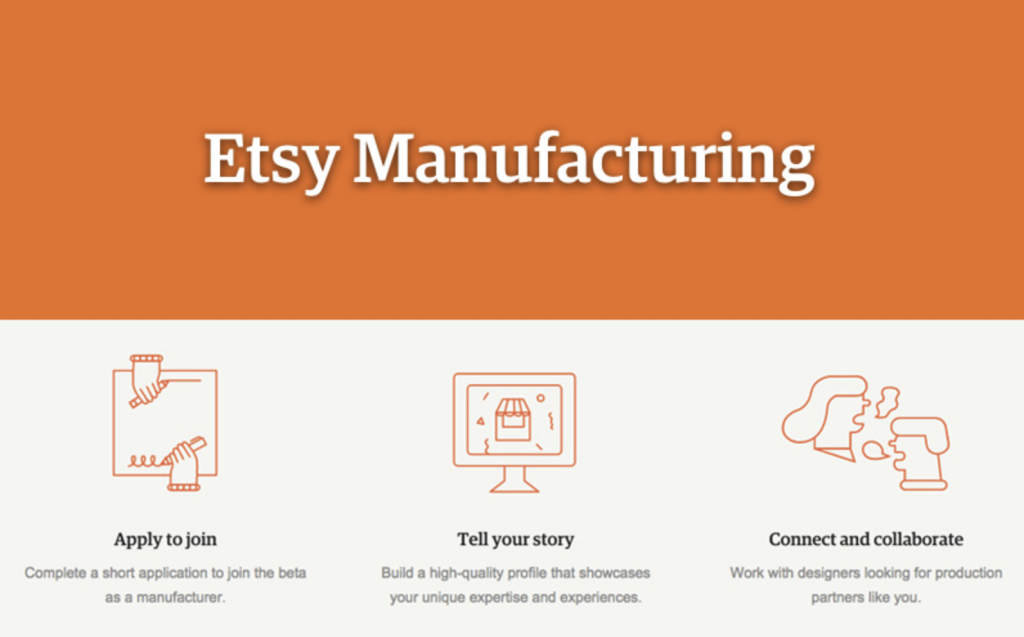When furniture maker Robert Kalin struggled to sell his handcrafted goods, he observed a new market opportunity for craftsmen like himself.
A talented artisan with immense range, Kalin can make anything from polished wood furniture to custom stereo add-ons and tunics in various colors. Alas, co-founding the global online marketplace for handmade goods now known as Etsy was a sensical progression for Kalin career-wise.
Kalim founded Etsy with friends Chris Maguire, Haim Schoppik, and Jared Tarbell in June 2005. The four partners then began to develop a virtual storefront out of Kalin’s Brooklyn apartment, also known as Etsy’s first headquarters. Here, creators could feature and sell unique, handmade goods, providing artisans and designers a platform to generate exposure and sales.
Etsy’s Etymological Origins
While unexpected, the name for this new venture is rooted in Italian cinema. Possessing extraordinary attention to detail and being constantly inspired by what they see, hear, touch, and experience, Kalin found inspiration in the 1963 Academy award-winning dramedy “8½” from Italian screenwriter and director Federico Fellini.
While watching the film, Kalin misheard the phrase “oh, sì,” which translates to “oh, yes” or “yes, yes, of course” in Italian. Being drawn to this sound, Kalin adapted it to Etsy, the name of his new platform, which would eventually become one of the largest e-commerce platforms in the world.
The Etsy Logo
The typography-based logo has remained straightforward since the company’s founding. It is void of fancy designs, intricacies, or iconography. Instead, the logo is the platform’s name, Etsy, in the serif font Minister EF Book.
The use of title case, or the capitalization of just the first letter, is also a differentiator, as many tech startups of the early aughts experimented with all-caps or lowercase logos with or without proper punctuation. Over the years, the logo has remained the same and is a prime example of a legacy brand intent on remaining timeless, reliable, and distinct.
Why Orange? A Look at Etsy’s Color Palette
The bold orange color of the Etsy logo evokes energy, vibrancy, and attention. The hex code is #F1641E, and such a bright and playful pop of color, while simple, sends the message that the Etsy brand is fresh, innovative, and unique, just like the artisans who sell their wares on the platform.
From a psychological perspective, it is well-documented that orange is associated with creativity and imagination. As such, it makes perfect sense why Etsy’s founders would opt for a logo that features this bold color on a clean, white background.
Additionally, the white background represents a clean slate, lending itself to the notion that the Etsy platform is a creative runway, or portal, connecting consumers to creatives worldwide.
The Favicon: The Singular “E”
To remain consistent, Etsy uses the first letter of the company’s name as its favicon, which is also used in web browser tabs and previews, the platform’s mobile app, and social media channels.
In an inverse representation of the full Etsy logo, the favicon features a bright white E set against an energetic orange background. This “E,” which stands for “Etsy,” provides a direct connection to the complete logo, and this consistency allows the brand to reinforce its position and universal recognition.
Unlike other tech companies that refresh their visual branding, especially following the shift to becoming a publicly traded company like Etsy is today, Etsy’s favicon has remained the same since the platform’s inception. This consistency helps perpetuate legacy brand recognition and timeless familiarity with users and investors.

What Makes Etsy’s Logo and Favicon Unique
The Etsy favicon embodies the same design philosophy as the complete logo: simplicity, clarity, and distinctiveness.
By reducing the logo to its most essential elements, such as the “E” and the orange color, Etsy created a favicon that works well for applications requiring small sizes without losing its impact or recognizability.
This approach aligns with broader trends in logo design for digital spaces, where more straightforward, more geometric shapes tend to perform better across various screen sizes and resolutions.
Etsy Today: Resellers on the Rise
Since its inception 19 years ago, Etsy has seen a significant increase in the types of sellers on the platform. The number of individuals or businesses that buy products wholesale and resell them on the platform, also known as resellers, has increased significantly.
In 2012, just three years before Etsy introduced an initial public offering (IPO) of $16 per share, fewer than 100,000 sellers were on the platform. Fast-forward to 2023, and the platform had approximately 9 million sellers, a 20% year-over-year increase from the 7.5 million sellers it saw in 2022.
Legacy makers using Etsy to showcase their unique wares and designs argue that the rise of mass-produced items on the platform deviates from Etsy’s original mission to support independent creators. Makers fear that an increase in factory-made products will ultimately replace or completely dilute Etsy’s allure—to make handmade items accessible to approximately 96 million active buyers.
While this practice has expanded the range of products available on Etsy, it has also sparked debate among the community’s core audience of artisans. In turn, in 2013 the platform has devised new rules and policies to balance the interests of various seller types. One such policy requires sellers to disclose whether their items are handmade, vintage, or commercially produced.
In 2013, Etsy began updating its policies to allow sellers to use outside manufacturers to produce their designs, as long as they are original and the manufacturing process is transparent. This change was aimed at helping successful sellers scale their businesses while remaining on the platform. Etsy has also invested in algorithms to detect and remove listings that violate its policies.
While the logo and branding have remained the same over the years, their meaning has shifted. Once a symbol of handmade and vintage goods, today’s Etsy represents a broader marketplace that includes mass-produced items alongside artisanal creations.
In September 2015, after the company’s IPO, initiatives like Etsy Manufacturing were developed to support independent creators, connecting sellers with small-batch manufacturers, aiming to balance scalability and the handmade ethos.
Conclusion
Etsy’s simple orange wordmark is far more than just a brand identifier. It’s a testament to the power of authentic design, a symbol of consistency in a rapidly changing digital landscape, and a reminder that the most effective branding sometimes comes from a genuine connection to a company’s core values.
In an age where logos often change a the drop of a hat in tandem with continuously evolving design trends, Etsy’s brand emblem stands as a beacon of individuality and creativity. It reminds us that true quality stands the test of time in the world of design, as in craftsmanship.













